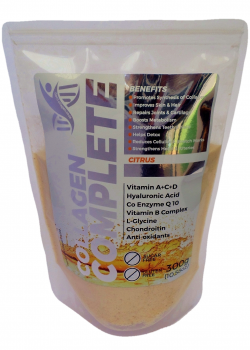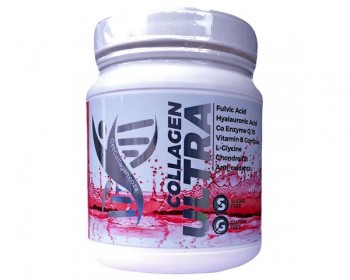Both our Collagen Ultra & Complete Supplements
Contain Glucosamine
Glucosamine Heals the Body in 4 Major Ways — Do You Have Enough?
Glucosamine is a compound naturally found within the cartilage of our joints, made from chains of sugars and proteins bound together. It acts as one of the body’s natural shock-absorbents and joint lubricants, allowing us to move around without (or at least with less) joint, bone and muscle pains.
Glucosamine possesses natural anti-inflammatory and anti-aging properties. One of the most popular supplements taken by people with bone and joint pain, glucosamine aids in treating common symptoms of age-related disorders like arthritis and osteoarthritis. (1) It can also help improve digestion and gut health, mobility, range of motion and general joint health, even in healthy people who have no chronic joint or bowel disorders.
Without glucosamine, everyday movements and tasks would be very difficult and painful. The body needs glucosamine for the synthesis of certain proteins and lipids (fats) that form various important tissues, especially cartilage. This plays an important part in the construction of our joints, tendons and ligaments. In addition, it helps form the fluids that surround joints and provide lubrication. (This is called synovial fluid). Glucosamine also serves an important role in microbiome health. It helps form connective tissue that make up parts of the digestive tract, a system that helps the immune system function.
Although not every person with severe joint pain will benefit from glucosamine supplementation, many find some relief from pain within just 6 to 8 weeks. (2) Many people do benefit from it, though, experiencing quality of life improvements like natural relief from arthritis, better digestive health, lower inflammation or less bone pain. It can be used for years safely to combat signs of aging and improve overall quality of life, with little to no side effects or risks in most people.
How Does Glucosamine Work?
Most of the research done on glucosamine looked specifically at the benefits of glucosamine sulfate, the natural chemical found in the human body. Researchers believe that using glucosamine supplements or obtaining it from natural sources like bone broth increases the amount of cartilage and fluid that surrounds our joints. This helps prevent joint breakdown and reduces pain.
Glucosamine is an aminosaccharide that helps create cartilage from compounds called aggrecan and proteoglycans. Since joint deterioration and loss of cartilage are common osteoarthritis triggers, you can see why glucosamine’s cartilage-building properties are important ways to naturally ease symptoms of the condition.
There’s no current recommended daily dosage for glucosamine, but most people do best when taking 500 milligrams to 1500 milligrams daily, whether alone or in combination with other supplements (like sulfate, omega-3s or MSM supplements). Studies show this dosage range helps:
- lower inflammation and help reverse autoimmune reactions
- preserve joint health
- reduce joint pain and tenderness
- protect and repair gut lining
- fight irritation to the stomach, bladder and intestines
- treat inflammatory bowel disease and leaky gut syndrome
- rebuild tissue and stronger bones following fractures or injuries
Remember, the most commonly recommended form of glucosamine is glucosamine sulfate. The “sulfate” seems to play an important part in joint health because it helps the body produce cartilage. Glucosamine sulfate seems to provide more of an impact compared to the other forms of glucosamine, including glucosamine hydrochloride or N-acetyl glucosamine.
4 Benefits of Glucosamine
1. Helps Improve Joint Health & Osteoarthritis
Glucosamine is one of the best supplements for supporting joint health and lowering symptoms related to degenerative disorders like osteoarthritis. Aging naturally impacts the strength and durability of our joints, normally causing cartilage loss and joint pain over time. It doesn’t improve symptoms 100 percent of the time, but compared to many other supplements like chondroitin, glucosmine consistently rank as one of the most effective for treating arthritis discomfort. (3)
Glucosamine slows down deterioration of joints when used long-term, plus it offers other benefits that prescription painkillers cannot (such as lowering chronic inflammation and improving digestive health). The results of taking glucosamine differ from person to person, but some long-term users often report pain relief that allows them to avoid surgeries and lower or eliminate medication use.
Osteoarthritis is a disorder characterized by ongoing joint pain caused from years of accumulating pressure and friction places on joints. It’s the most common type of arthritis worldwide, effecting millions of people (especially older adults). Glucosamine is one of the top supplements I recommend as part of a natural treatment approach for managing arthritis with diet and lifestyle changes.
Osteoarthritis is a degenerative disease, so it becomes harder to move over the years as joint friction increases. Studies show that taking about 800 to 1500 milligrams of glucosamine daily can help millions of people suffering from degenerative joint diseases, preventing further damage, especially in commonly effected joints such as those in the knees and hips. (4) It has been shown to help offer relief from joint pain within 4–8 weeks, which might be longer than some prescriptions or over-the-counter pain killers, but it’s also a more natural and well-tolerated approach.
Glucosamine, whether used alone or in combination with other supplements like chondroitin, is not a “cure all” and guaranteed to help everyone, but major studies have found it can help many, especially those impacted most by arthritis. The Glucosamine/Chondroitin Arthritis Intervention Trial (GAIT), which is considered the most comprehensive trial ever done involving glucosamine, found that the combination of glucosamine and chondroitin sulfate used for 8 weeks resulted in significant relief in the majority of study participants who had high amounts of joint pain. Many experienced improvements regarding their moderate-to-severe knee pains, although not all did (including those with milder pains). (5)


